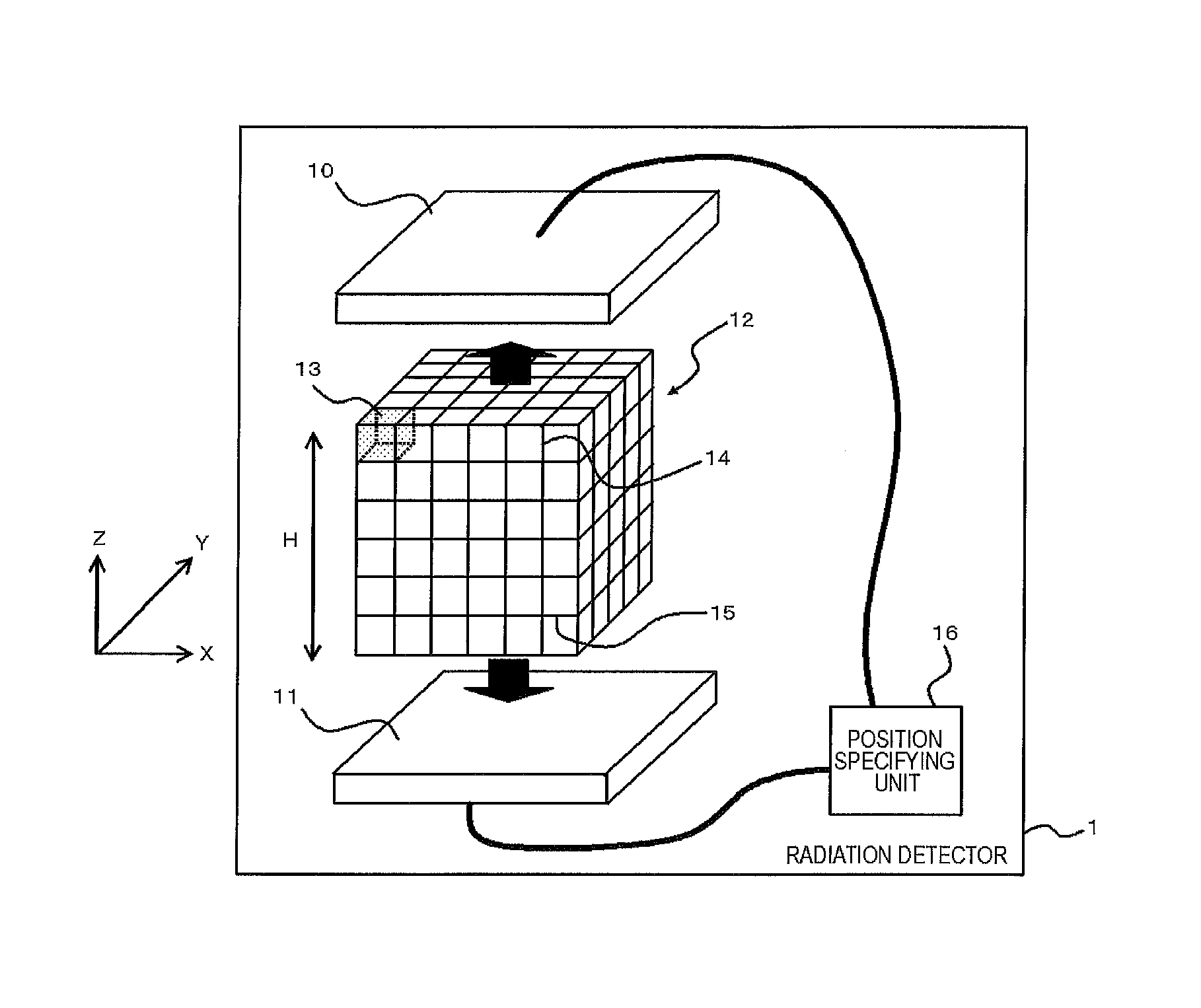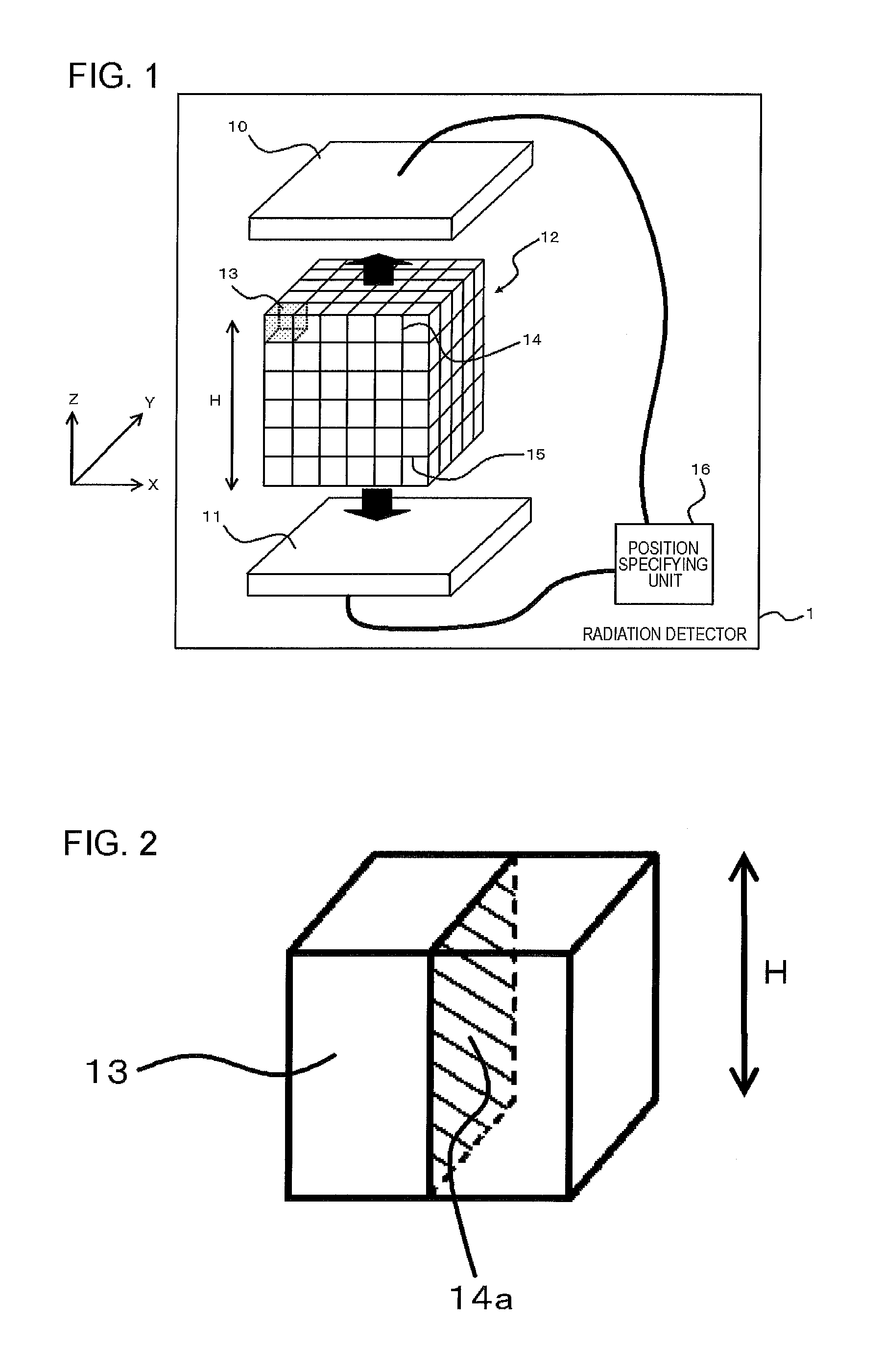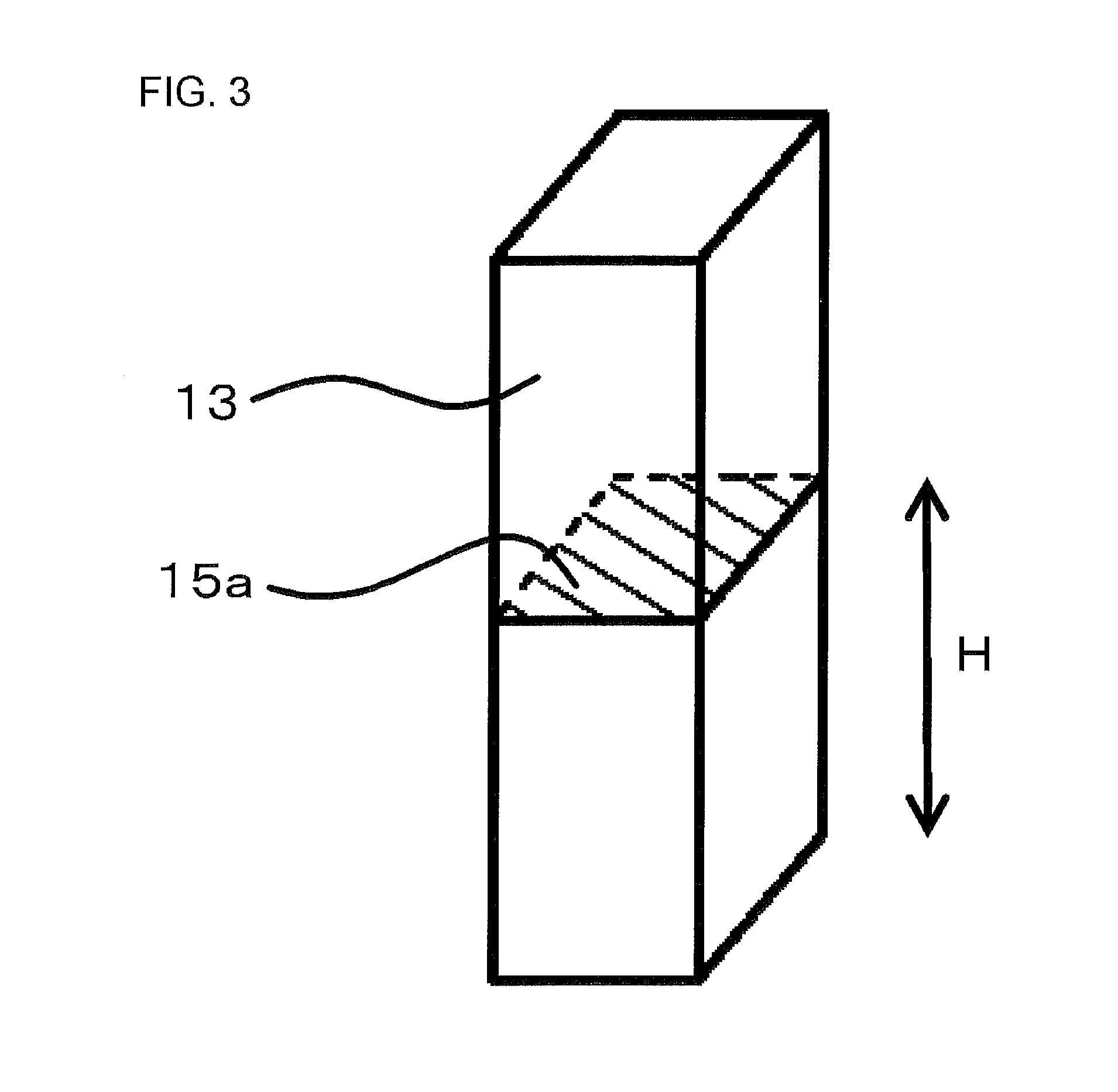Radiation detector
a detector and radiation technology, applied in the field of radiation detectors, can solve the problem that the depth resolution of the scintillator is not sufficient in any related art, and achieve the effect of simple structure and higher position resolution
- Summary
- Abstract
- Description
- Claims
- Application Information
AI Technical Summary
Benefits of technology
Problems solved by technology
Method used
Image
Examples
example 1
[0082]In Example 1, as illustrated in FIG. 5, a radiation detector was manufactured in which the scintillator blocks 13 are stacked in the z direction. FIG. 5 is a schematic diagram of a cross-section of the radiation detector of Example 1.
[0083]The scintillator block 13 is a Ce:GAGG (Ce:Gd3Al2Ga3O12) (hereinafter, referred to as “Ce:GAGG”) crystal doped with cerium. A shape thereof was a shape of a cube which is 3 mm long, 3 mm wide, and 3 mm high.
[0084]Five scintillator blocks 13 were stacked with air layers (interposed layers 15) having a thickness of 10 μm interposed therebetween in the z direction. Next, the entire outer circumference of the side surfaces of the stacked body was covered by a fluororesin film (light blocking layer 14) with a thickness of 1 mm. In addition, silicon photomultipliers (light receiving elements 10 and 11) having a light receiving surface of 3 mm×3 mm were optically coupled to both ends of the stacked body in the z direction, thereby manufacturing the...
example 2
[0087]In Example 2, as illustrated in FIG. 7, a radiation detector was manufactured in which the scintillator blocks 13 were arranged in a three-dimensional manner (4×4×4). FIG. 7 is a schematic diagram of a cross-section of the radiation detector of Example 2.
[0088]The scintillator block 13 is a Ce:GAGG crystal. A shape thereof was a shape of a cube which is 3 mm long, 3 mm wide, and 3 mm high. The interposed layer 15 was an air layer with a thickness of 10 μm. The light blocking layer 14 was 0.2 mm thick, and contained barium sulfate. In addition, the light blocking layers 14 were provided on, among the scintillator block boundary surfaces, all boundary surfaces which extend in a direction parallel to the height direction H (the z direction in FIG. 7) of the three-dimensional stacked scintillator 12 (prism). In addition, the entire outer circumference of the side surfaces of the three-dimensional stacked scintillator 12 obtained through three-dimensional arrangement (4×4×4) of the...
example 3
[0090]In Example 3, a LYSO (Ce:(Lu,Y)2SiO5) (hereinafter, referred to as “Ce:LYSO”) crystal doped with cerium was used as the scintillator block 13. Other configurations are the same as those of the radiation detector of Example 1.
[0091]The radiation detector was irradiated with gamma rays of 662 keV from a cesium 137 radiation source, and a voltage pulse signal output from each of the silicon photomultipliers was analyzed by using Equation (1), thereby obtaining a position resolution spectrum illustrated in FIG. 9. A position resolution in the z direction had the performance of discriminating a position of the scintillator block having a thickness of 3 mm with a resolution of FWHM=0.4 mm, and an energy resolution was 11.3%.
[0092]As described above, it can be seen that the radiation detector of the present embodiment which is obtained by arranging a plurality of radiation detectors of Example 3 in parallel has a good position resolution in a depth direction (z direction).
PUM
 Login to View More
Login to View More Abstract
Description
Claims
Application Information
 Login to View More
Login to View More - R&D
- Intellectual Property
- Life Sciences
- Materials
- Tech Scout
- Unparalleled Data Quality
- Higher Quality Content
- 60% Fewer Hallucinations
Browse by: Latest US Patents, China's latest patents, Technical Efficacy Thesaurus, Application Domain, Technology Topic, Popular Technical Reports.
© 2025 PatSnap. All rights reserved.Legal|Privacy policy|Modern Slavery Act Transparency Statement|Sitemap|About US| Contact US: help@patsnap.com



